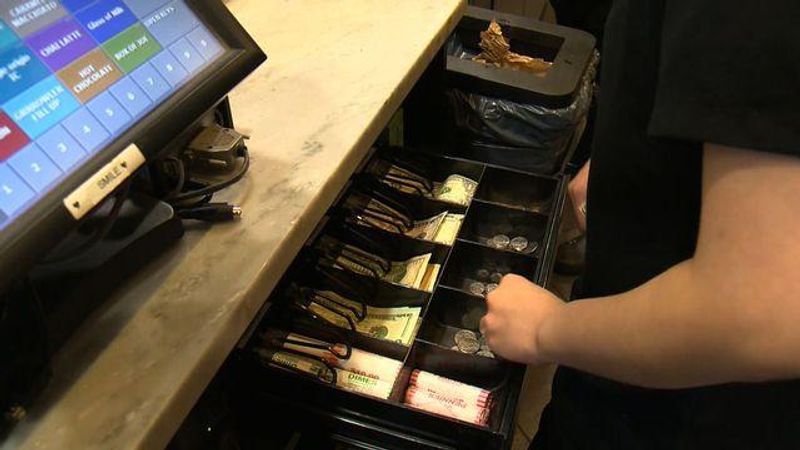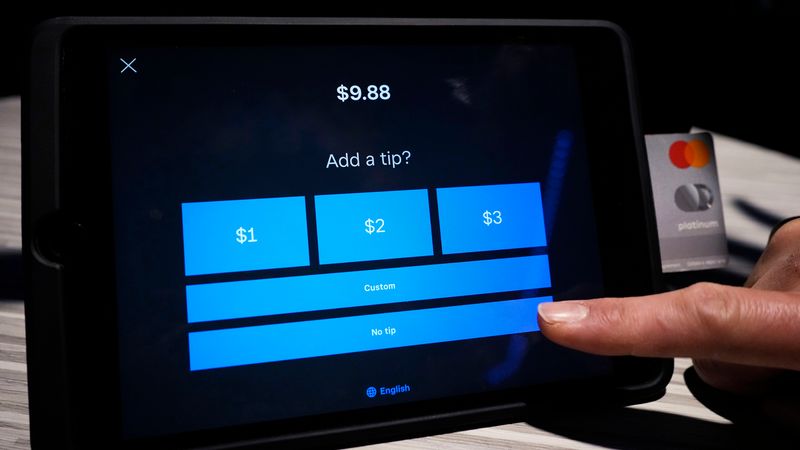Every generation has its pet peeves, but some complaints just don’t resonate with younger folks anymore. Baby Boomers, born between 1946 and 1964, often hold onto viewpoints that reflect the world they grew up in.
Meanwhile, younger generations have embraced new norms and technologies that make these complaints seem outdated. Let’s look at ten topics that highlight this generational divide.
1. People Not Using Cash Anymore

Remember when wallets bulged with bills and coins jingled in pockets? Many Boomers lament the disappearance of physical currency, viewing cash as more tangible and trustworthy than invisible digital transactions.
Meanwhile, most younger people can’t remember the last time they visited an ATM. The convenience of tapping a phone to pay or splitting a dinner bill through an app has made cash feel like an ancient relic requiring extra trips to the bank.
For Boomers, the complaint often centers around privacy concerns and the worry that technology might fail. Yet society has largely embraced the speed, convenience, and automatic record-keeping that comes with digital payments—leaving cash as an increasingly rare backup option.
2. Decline of Handwriting and Cursive

The elegant loops and flowing lines of cursive handwriting evoke strong nostalgia for many Boomers. They’ll tell stories about spending hours perfecting their penmanship, lamenting that today’s youth can barely sign their names.
Schools have largely phased out intensive handwriting instruction, prioritizing keyboard skills instead. The reality is that most communication happens through screens now—from work emails to personal messages.
While Boomers see this shift as a cultural loss, younger generations view handwriting as a specialized skill rather than a daily necessity. Digital text is searchable, editable, and accessible to people with motor challenges—practical advantages that have made society collectively shrug at cursive’s decline while Boomers continue mourning its fading importance.
3. “Everyone’s Always on Their Phones”

Walk into any public space and you’ll likely hear someone muttering about people glued to their screens. The sight of families at restaurants, each person scrolling through their phone, represents to them the death of face-to-face interaction.
What Boomers often miss is that these devices serve as portals to human connection, not barriers. That teenager might be maintaining friendships across continents, while the young parent could be coordinating childcare or working remotely.
Most non-Boomers recognize that phones aren’t just phones anymore—they’re cameras, libraries, maps, banks, entertainment centers, and lifelines. The constant phone use that drives Boomers crazy has become so thoroughly normalized that pointing it out feels like complaining about people wearing wristwatches or carrying wallets in previous eras.
4. Casual Clothing in Public

“People used to dress up to go shopping!” Boomers often reminisce about an era when airline travel meant suits and dresses, not sweatpants and flip-flops. The sight of someone grocery shopping in pajama pants can trigger a lecture about declining standards and self-respect.
Younger generations have embraced comfort as a priority, recognizing that appearance doesn’t necessarily signal character or worth. The pandemic accelerated this trend, blurring the lines between home and public attire as remote work normalized athleisure wear.
While Boomers may see casual dress as laziness or disrespect, most others view it as a welcome liberation from uncomfortable social expectations. The freedom to wear leggings to the mall represents a cultural shift toward prioritizing personal comfort over performative formality—a change that’s here to stay.
5. Lack of Loyalty to Employers

“In my day, you stayed with one company for life!” This refrain echoes through many Boomer conversations about work ethics. They often view job-hopping as a sign of flakiness or entitlement, reminiscing about gold watches awarded for 30 years of service.
Meanwhile, younger workers have witnessed companies downsize without warning and pensions vanish into thin air. They’ve learned that loyalty rarely flows both ways in modern corporate culture, where staying put often means falling behind in salary and skills.
The reality that most have accepted—except many Boomers—is that changing jobs every few years has become the most reliable path to career advancement and fair compensation. The employment landscape has fundamentally transformed, making company-hopping less a character flaw and more a strategic necessity in today’s economy.
6. Participation Trophies and “Soft” Parenting

Few topics trigger Boomer eye-rolls faster than participation trophies. “Back in my day, only winners got recognized!” they’ll declare, convinced that acknowledging all participants has created a generation of entitled snowflakes unable to handle life’s harsh realities.
This perspective misses how modern parenting has evolved based on child development research. Today’s approaches often focus on intrinsic motivation rather than external rewards or punishments, recognizing that children develop resilience through supportive guidance, not just tough love.
Most younger parents have moved beyond the false dichotomy of strict versus permissive parenting, embracing nuanced approaches that balance boundaries with emotional support. While Boomers continue blaming participation trophies for society’s ills, research suggests these small tokens have far less impact on character development than the quality of parent-child relationships.
7. Decline of Phone Calls and Voicemails

“Why don’t people answer their phones anymore?” The shift from calls to texts represents one of the starkest communication divides between generations. Boomers often interpret a preference for texting as avoidance or rudeness, unable to understand why their voicemails go unchecked for days.
For most under 50, an unexpected phone call feels like an intrusion—the digital equivalent of someone showing up at your doorstep unannounced. Texting allows people to respond thoughtfully on their own schedule while managing multiple conversations simultaneously.
Voicemail has become particularly antiquated, requiring time-consuming listening when the same information could be scanned in seconds as text. While Boomers continue leaving lengthy voice messages and expecting prompt returns of their calls, the rest of society has embraced asynchronous communication that respects everyone’s time and attention.
8. Changing Language and Slang

“That’s not what that word means!” Boomers often express frustration when words like “literally” are used figuratively or when they encounter terms like “ghosting” or “sus.” Their complaints about linguistic shifts reveal a deeper discomfort with cultural evolution.
Language has always been fluid, adapting to reflect changing social realities. Today’s digital world simply accelerates this process, with new terms spreading globally in days rather than decades.
Most non-Boomers understand that language serves people, not the other way around. The pronouns debate particularly highlights this divide—while some Boomers resist singular “they/them” as grammatically incorrect, linguists note it’s been used this way for centuries. Society has largely moved toward viewing language as an evolving tool for clear communication and respect, leaving prescriptivists to grumble about the dictionary definitions of their youth.
9. Digital News Over Print Newspapers

The rustle of newspaper pages over morning coffee represents a cherished ritual for many Boomers. They lament the closure of local papers and the rise of online news, viewing digital media as less trustworthy and substantial than printed journalism.
This nostalgia overlooks how print media was never perfect—deadlines meant day-old news, and physical constraints limited depth and diversity of coverage. Digital platforms can update stories in real-time, incorporate multimedia elements, and connect readers directly with sources and additional context.
While Boomers worry about the loss of shared community experience through local papers, younger generations have created new forms of information sharing through curated feeds and citizen journalism. Most people have embraced the accessibility, immediacy, and interactive nature of digital news—recognizing that the medium matters less than accurate, thoughtful reporting.
10. Tipping Culture Confusion

The sight of a tablet swiveling around at a coffee counter often triggers visible discomfort in Boomer customers. “Now I’m expected to tip for someone just doing their job?” they mutter, bewildered by prompts suggesting 18%, 20%, or 25% for counter service.
Tipping expectations have indeed evolved rapidly, driven by changing payment technologies and service industry economics. Younger generations have largely adapted to these shifts, recognizing that many service workers rely on tips to supplement inadequate wages.
The confusion extends beyond amount to method—Boomers often prefer calculating tips manually and leaving cash, while digital natives tap preset percentages without a second thought. This tipping transformation represents a broader pattern where economic systems change faster than cultural norms can adjust, leaving Boomers feeling blindsided by expectations that others have simply incorporated into their daily routines.


Comments
Loading…